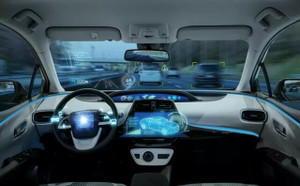Are autonomous vehicles the future of driving?
By Kijiji Autos
Your well-being remains our top priority. Please seriously consider whether in-person meetings are necessary and visit our for more information.
Despite all of the conversation, nobody knows exactly how autonomous cars will shape the way we live for the next 10, 20 or even 50 years. It is clear, though, that they will have a serious impact on how we interact with each other as well as the environment.
What exactly is an autonomous vehicle?
Autonomous vehicles, otherwise known as self-driving or “”driverless”” cars, are cars that don’t require a human driver’s intervention to safely operate. They combine several technologies, such as sensors, cameras and software, to navigate, control and drive the car.
Thanks to the attention this technology has been given in the past couple of years, there are a number of vehicles that have been developed for specific jobs and tasks that feature different levels of autonomy. Researchers often rank these levels based on a scale of 0 to 5, where 0 equals total human control and 5 represents a vehicle that is completely autonomous in all situations.
There are already examples of partially autonomous vehicles operating on city streets and highways, while many experts suggest that a vehicle with Level 4 autonomy could become available for sale within a couple of years.
History of self-driving cars
Although people have been experimenting with the idea of driverless cars since the 1920s, the first self-sufficient versions didn’t appear until 1980s. The following timeline will give a brief history to the autonomous vehicle:
1925: Houdina Radio Control debuted the first example of a driverless car with the “”American Wonder,”” a radio-controlled vehicle.
1961: Inspired by the space race, the Stanford Cart was designed—the world’s first true self-driving wheeled vehicle. The Cart was outfitted with cameras and programmed to autonomously detect and follow a solid white line on the ground.
1977: Tsukuba Mechanical Engineering in Japan produced an autonomous passenger vehicle that could recognize street markings while travelling at almost 30 km/h.
1987: German engineer Ernst Dickmanns equipped a standard sedan with many cameras and micro-processing modules to detect objects on the road. This vehicle, called VaMoRs, was capable of navigating the Autobahn at a speed of almost 100 km/h.
2004-2013: For almost a decade, the United States’ Department of Defense’s research division, DARPA, hosted a yearly competition for the general public to drive the development of autonomous vehicles forward. This challenge resulted in further developments in self-driving technology.
The future of autonomous vehicles
With further collaboration between public and private sectors, the development of autonomous vehicles has, and will only continue to grow at an impressive rate. While car manufacturers and technology companies race to be the first one to the market, governing organizations are working hard to guarantee that autonomous vehicles are safe for everyone on and off the road.
You might not be able to purchase an autonomous vehicle quite yet, but Kijiji Autos has new and nearly new options that are equipped with top-of-the-line technologies, such as Tesla Autopilot and Nissan ProPilot Assist. Start looking for your next car today.
Easily find your next ride on Kijiji Autos
Search now10 Most Popular Minivans in Canada for 2024
10 Most Popular Pickup Trucks in Canada for 2024
10 Most Popular Sedans in Canada for 2024
10 Most Popular Convertibles in Canada for 2024
10 Cheapest Electric Cars in Canada for 2024
10 Most Popular Hatchbacks in Canada for 2024
Can You Buy a Car With a Credit Card?
How to Buy a Car From a Private Seller
Should I Buy a New or Used Car?
When Is the Best Time to Buy a Car?









